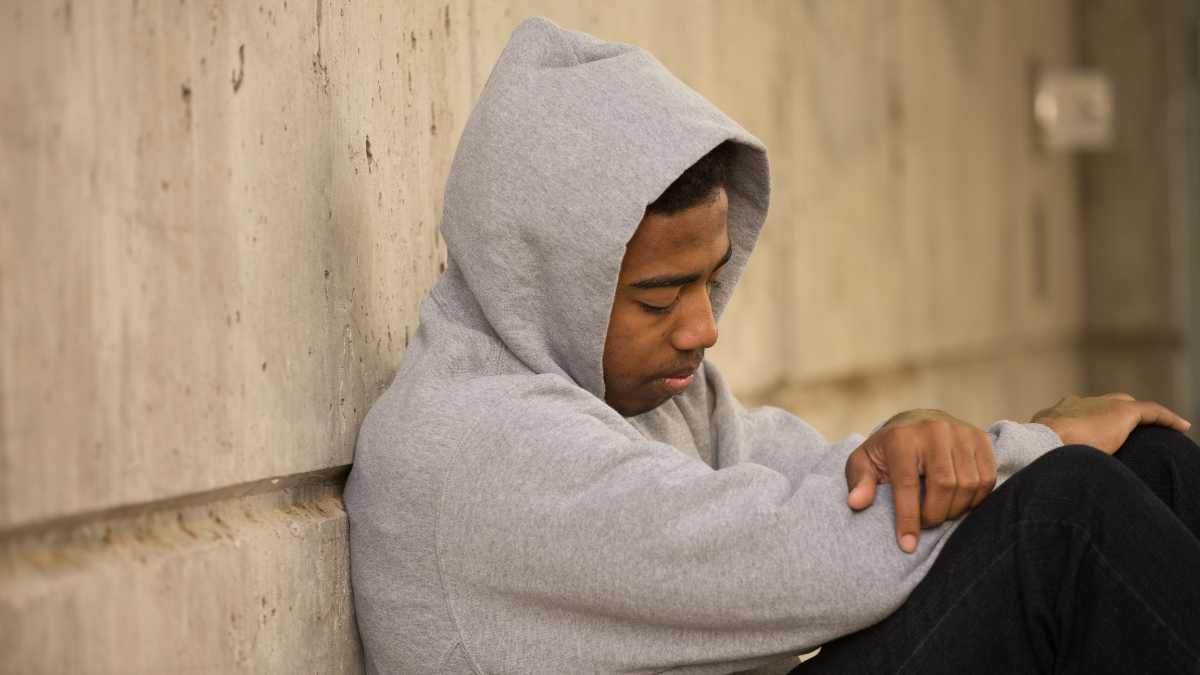Researchers studying suicide haven’t included enough Black people, but one study points the finger at a familiar cause for a rising rate among Black youths: racism.
By
This article was originally published on Word In Black.
Data on Black teen suicide confirm that the kids are not alright, and the research shows that not enough has been done to understand or confront the problem.
Although suicide has become a leading cause of death for young Black people in the U.S. — and the rate is trending sharply upward — experts say Black people are underrepresented in research on mental health and suicide.
While research on how and why young people commit suicide is still a relatively new discipline, information on suicides among youth of color, and solutions, are hard to find.
What’s known is that the typical hallmarks of structural racism, ranging from living in an under-resourced community to a lack of healthcare, increase the risks that a Black teen will kill themselves, according to a report from the Johns Hopkins University Center for Gun Violence Solutions.
Racism “is impacting Black youth at a structural level,” according to the report, which was released August 2023.
Jocelyn Meza, a clinical psychologist and psychiatry professor at the University of California – Los Angeles, says it’s disturbing but not surprising that researchers aren’t paying attention to the role racism plays in the rising level of Black youth suicides.
“We focus so much on symptom reduction at the individual level, but without really contextualizing these forces that are more systemic,” says Meza. “We’re really ignoring social structures in our treatment development.”
The data itself illustrates the problem.
A February 2023 CDC report found that overall suicide rates among Black youth increased in 2021, even though it had dropped slightly the two years prior. The report also found evidence of sharp and increasing racial disparities in the occurrence of suicidal thoughts and behaviors, which were exacerbated by COVID-19 pandemic.
The rate of Black people ages 10 to 24 years old dying by suicide increased by 36.6%, the largest increase reported, and Black children ages 5 to 12 are twice as likely to die by suicide as White children the same ages. The 10-year trend among high school students in grades 9 through 12 revealed high past-year rates of suicidal thoughts and behaviors, as well as depressive symptoms among youths who experience mental health disparities.
Intersectionality also plays a role. Almost half of all students who identified as multiracial had the highest rates of persistent feelings of sadness or hopelessness, as did 22% of lesbian, gay, or questioning students. One-third of students with same-sex partners reported at least one suicide attempt in the previous year, as compared with 6% of youths with only opposite-sex partners.
Arielle H. Sheftall, an associate professor of psychiatry at the University of Rochester Medical Center in New York, says that adverse childhood experiences — also known as ACEs — are factors in suicidal ideation. The experiences include the loss of a family member, witnessing or experiencing domestic violence or financial hardship.
“Unfortunately,” Sheftall says, “Black youth are more likely than their counterparts to be overrepresented in environments where [these] occur, including (but not limited to) low-income neighborhoods and the foster care system.”
Still, the Johns Hopkins report identifies racism as an important factor in suicidal ideation among young Black people.
The harm comes from “living in disinvested, under-resourced communities with reduced access to gainful employment opportunities, affordable, safe housing, and access to other resources like healthcare, social services, and more,” according to the report.
Yet despite suicide ranking as a leading cause of death in the United States and the increasing rate among Black teens, Blacks are underrepresented in research on mental health and suicide, according to the Johns Hopkins report. Efforts to research youth suicide are still relatively new, and suicidal behavior in youth of color is very under-researched.
The American Academy of Pediatrics has a list of several suicide risk factors that parents and anyone around teens should recognize:
- Loss of a loved one to death, divorce, deployment, deportation or incarceration
- Bullying (in person or online)
- Discrimination, rejection or hostility due to gender identity or sexual orientation
- Racism, discrimination and related inequities and stressors
- Stigma (the belief that it’s wrong or shameful to talk about mental health or suicide)
- Witnessing or suffering violence or domestic abuse
- Financial instability that causes worry and insecurity
- Suicide in their school or friend group
- Major life-changing events, such as a breakup with a dating partner, a change in social connections, academic disappointment or a major health issue
- Self-harming behavior
If you are thinking about suicide, worried about someone else, or need emotional support, call or text the Suicide & Crisis Lifeline at 988. Help is available 24/7. TTY users can dial 711 then 988 to get help.



